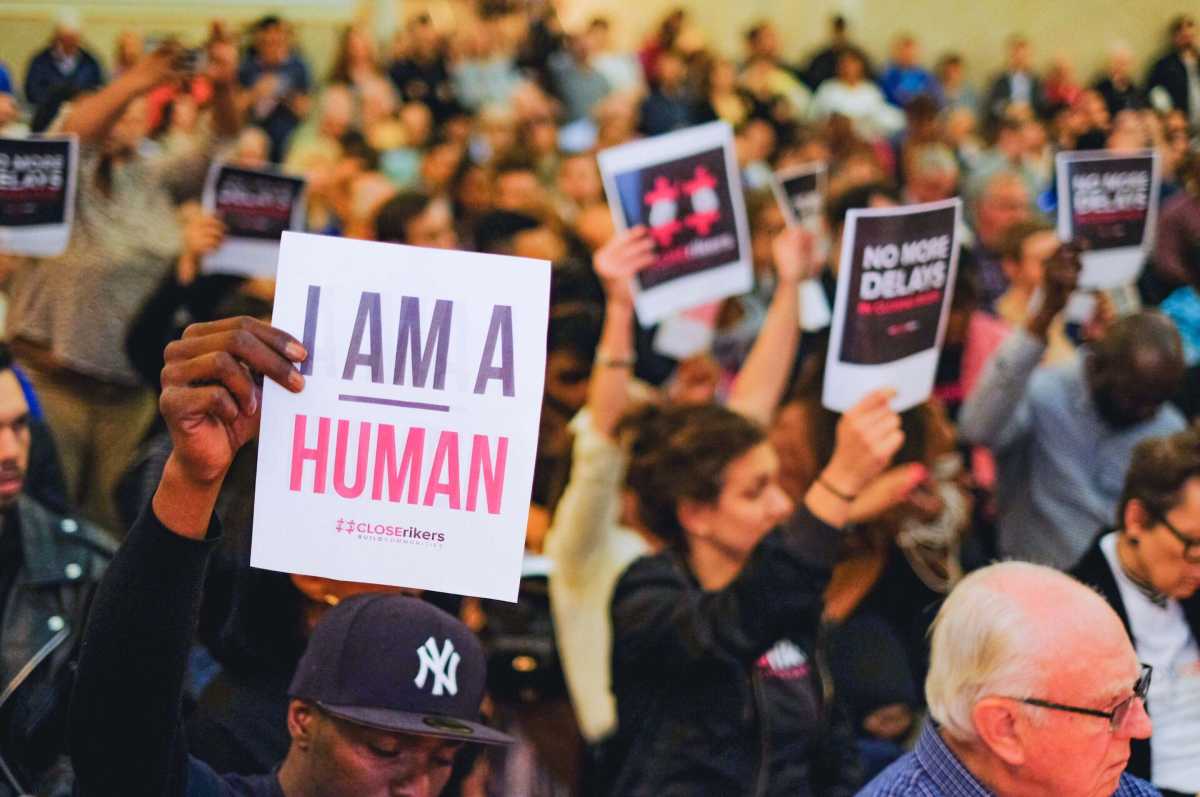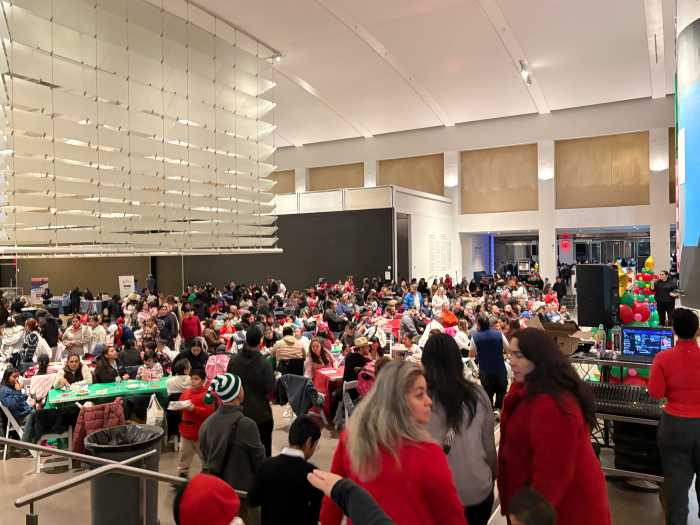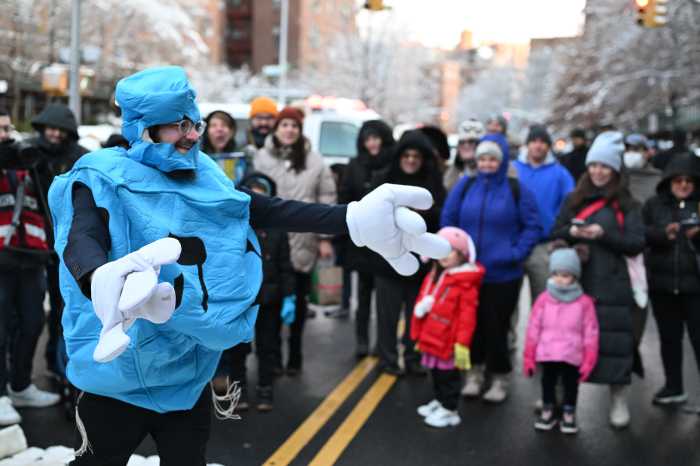The topic of closing jails on Rikers Island saw many people at the first Queens public hearing open up about the abuses they endured in the isolated and controversial correctional facilities.
The event at Queens Borough Hall on Wednesday night stood as a chance for minorities in the city to make their experiences known to neighborhood residents who many viewed as “racist” or “NIMBYs”, though few of the attendees agreed that borough-based jails were the way to go.
The presentation displayed at the hearing was the same one given to Queens reporters at an earlier briefing.
While residents of Kew Gardens, Forest Hills and Briarwood believed the 1.2 million square foot jail planned to take the place of the Queens Detention Center would damage property values overburden infrastructure, others believed that jails should be abolished entirely.
Kandra Clark, however, was on board with the Kew Gardens jail proposal after spending time herself in Rikers and working in an advisory capacity with Beyond Rosie’s Campaign to the women’s facility planned for the Kew Gardens jail.
As a survivor of childhood sexual abuse, Clark was forced to relive her 8-year-old nightmares in Rikers as she claims that assaults are endemic in women’s facility on Rikers. According to Clark, the new jail which will hold 200 women on any given day will focus on providing mental health services, a maternity ward and nursery instead taking a punitive approach.
“We can do so much better than what the current mayor’s plan is, but I do know that if we do not close Rikers now, I don’t think it’s ever going to happen,” Clark said. “There’s less than 500 women on Rikers, approximately 61 of them have serious offenses… We’re talking about as little as 100 women that would be maximized in this centralized facility. If you spread those 100 women out between four boroughs, you’re getting 25 in each borough, you’re getting no programming, you’re getting no oversight, we can’t control whether it’s a trauma informed facility.”
But community board members and residents of the surrounding communities stood their ground on the negative impacts they believed would be inflicted on the community from congestion if the jail was built.
“The reality is that we are in a transportation black hole. Traffic doesn’t move, the subways are overcrowded, they cannot do anything about expanding the platform at [Union Turnpike – Kew Gardens Station],” Andrea Crawford, member of the Neighborhood Advisory Committee, said. “There is no investment in this city into infrastructure.”
Crawford said she was in favor of justice reform measures that would see fewer people incarcerated, but does not see the Kew Gardens jail as “appropriate” to place in Kew Gardens.
Many echoed this sentiment with chants that called for Rikers to remain open.
One speaker by the name Mark was cynical about the retail space planned for the ground level which Dana Kaplan, deputy director of the Mayor’s Office of Criminal Justice, indicated might be used by a community organization.
“They want to invest $10 billion in new jails but we have to fight to $1 billion for NYCHA,” he said. “They say they’re going to beautify this jail with a community center. You’re going to be able to go visit your loved ones in jail and maybe play some basketball on the way out, what kind of plan is that.”
Assistant District Attorney James Quinn, however, dismissed the concerns of people who said the majority of people in Rikers were awaiting trial or could not afford bail. He claimed that he had run the numbers earlier that day and that there were only 11 people in Queens in that position.
“You’re talking from emotions. Not facts,” Quinn said. His remarks were followed by heckling.


































